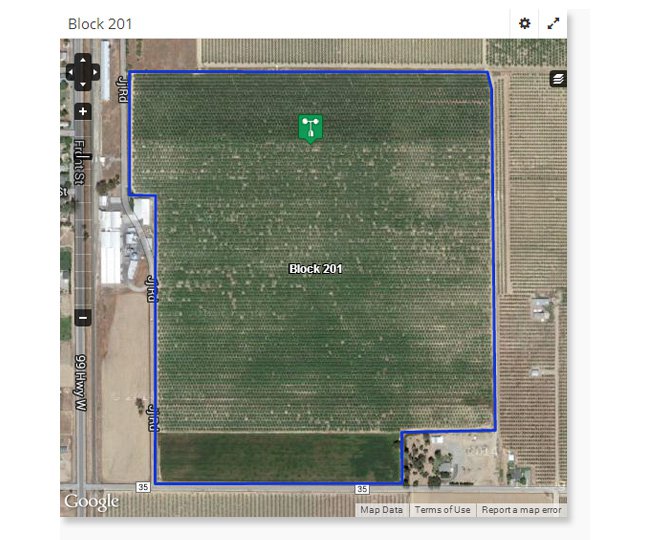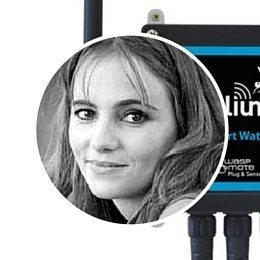OnFarm’s CEO talks with us on their Ag platform, and resource savings currently being seen from large farming using connected applications in their operations.
Can you give us a little background about yourself and the origins of OnFarm?
I grew up here in California where my family grew table grapes. After college I spent 20 years in software and came back to agriculture, specifically Ag technology, when I joined the executive team of a venture capital-backed soil moisture monitoring company.
The idea behind OnFarm started when, back in 2011-2012, I saw that farmers were having a hard time using information effectively. They were adopting technology, hardware and other things, and would get to a point where they had a hard time adopting new systems, because there wasn’t interoperability. So they could only look at a couple of systems, the data was coming at them from a lot of different places and in large quantities; it was frustrating for most farmers.
And the end result was that in many cases they just stopped buying new technology because they couldn’t consume more information. Which is a complete failure on many fronts.

So they had all this incoming data, but couldn’t do much with it?
Right. The point of buying technology hardware is so you can make a decision. So if you can’t do that, what’s the point of buying new hardware?
So, my thesis was that if we could connect the devices, make them plug-and-play for the farmer, we could make it transparent and simple for them to adopt new technologies that they would like to use. And if we could do that, we would solve a bunch of problems.
First, farmers could adopt technology and make decisions that impacted their operation which would enable them to grow more, and more efficiently. Second, companies that product hardware or data could see new and better ROIs without altering their core product, just because the data was assessable and in many ways more meaningful. And I believed we could create the platform on which they could do that.
Can you give us a little more background on the platforms development?
We initially described it as an M2M (machine-to-machine) platform, this was before IoT or IoE. The industry has no data standards so we went about building data connectors from an open network of companies. We went out and partnered with some key companies in the industry and then started building that network. Today we’ve built several dozen partnerships including most of the plant and soil sensor companies and several big industry leaders like John Deere. In Ag, we pioneered the concept of creating a platform of these interconnected devices across the industry, and did it without any data standards, published APIs, or even common schemas.
We’ve become the de facto company providing a common platform for data.
Most of these devices are connected via cellular or some radio modem. We automatically pull that data in, bring it into our backend platform, form there we have a dashboard growers subscribe to and get their information in one place. All normalized, in a modern UI design. If you’re familiar with Domo or Duckboard or some of the Business Intelligence dashboards, it has a similar feel with widget based drag and drop visualizations objects for all the data.
Farmers put data where they want it, manage it how they want, and end the end, get the most out of that information based on their specific crop and they way they operate.
How do farmers think about the IoT?
It’s evolved. I don’t think I’ve had a farmer ever call it The Internet of Things or The Internet of Everything. They’re much too practical that. But what we’ve seen is this excitement from farmers, especially larger commercial farmers, our target market. It’s not the five-acre organic farm that sells at the local farmer’s market. Today our typical customers have 500 or more acres, and we’ve got some really large growers with more then 10,000 acres.
We’ve have customers in many places over the US today in a broad range of crops, everything from nuts and fruits and vegetables to barley, cranberries, rice, peanuts and corn.
Farmers tend to get really excited when we discuss what we’re doing, because just like any business, they’re looking for efficiency. Farming is challenging, farmers are continually working on how to manage a complex, diversified operation with people everywhere. And importantly, how do you manage it for the most profitability when the people in the field are making decisions that can affect your bottom line every day? How do you keep them informed? How do you make sure they’re making the right decision? OnFarm is a great tool because we give them the decision points.
Is the management all top-down, or can field operators add manual inputs to the system too?
They can. A lot of it is automated, pulled from the sensors, and the conditions the grower wants to manage to are already in our platform. So let’s say a farmer wants to be alerted when the temperature drops to a certain level because they need to start the frost-protection devices to keep their oranges from freezing. This type of functionality and operations are already in the system today.
But even though they can use it for planning throughout the season, a lot of it doesn’t require them to do anything. The data comes at them in a way that they can make sense of, it keeps them informed about what’s going on. Form alerts and schedules to internal communication.
What are the barriers for new adopters? Are hardware costs still seen as the largest issue?
Hardware’s always expensive if you can’t get anything out of it. Some farmers have systems that didn’t perform well for them, hardware-wise, so sometimes there’s a reluctance of jumping into anything new. It’s like any other early adopter syndrome, you get a closet full of stuff that you thought was really cool when you bought it and just didn’t perform very well. We’ve all been there. Farmers are no different. Some have barns full of stuff that they’ve tried and later abandoned.
The key question is, does the technology actually deliver a return on investment? If it produces a great return on investment, cost isn’t really the issue. But if the returns are marginal, or difficult to replicate then there’s going to be an adoption challenge.
I think sometimes farmers wrestle with understanding what technology will work for them, how to use that technology, what’s important for their crop at the time, and what delivers good results. There’s a lot of different technologies out there. I think sometimes they struggle to differentiate between them to find the right fit.
You’re in a pretty narrow vertical in the agriculture space. What’s your outlook on the IoT as a whole and where do you see yourself in that market?
We think it’s broader than just agriculture. Today, we do a great job of integrating data from hardware and the cloud. We want that process to be ubiquitous. We also re-brand or white label our products for other companies, and because of our flexibility OnFarm is being outside of agriculture, for instance in golf turf to manage golf course health and playability.
We see the future as more than just IoT. How do you take that information and help improve the decision process? Can we use analytics to create recommendations to help that grower make decisions like “how much to water their crops”? Let’s say you’re in drought conditions, like we are in California. How do we help farmers find the most efficient use of the water they have? When there’s a water shortage, applying whatever water we have available at the right time could mean saving a crop.
Analytics can help in that process. We’re working on being able to provide those types of solutions to the marketplace, and then provide automation to execute on those analytics. So not only helping a farmer figure out how to maximize water usage, but actually turning on devices and managing the equipment so the crop gets precisely as much water it needs, exactly at the right time. That is a lot broader then just data collection.
Do you have insights from your customers about resource savings, increased yields, and the like?
We do have some, but I will put a self-asterisk here and say Ag is tough because there is so much variability year-to-year with weather and other conditions. But regardless, farmers do tell us three things.
One is many see a 2 to 3 percent increase in yield, because they’re managing the decisions more efficiently or more timely. Second, they see about a 10 percent savings in water in many cases. Third is a productivity savings, so instead of spending 2 to 3 hours a day in planning in some cases, they’ll figure out what they need to do in 30 minutes. All are all extremely important impacts for farmers.

When you multiply that 10 percent water savings across operations of that size, that’s pretty amazing.
I’ll give you an example of its impact. We’re working with the USDA, IBM and the University of Georgia, along the Flint River Basin in Georgia to build analytic based irrigation decision systems. The University of Georgia did a study around better decision-making through analytics. They believe it can create a 15 percent water savings, so in that area, it means 50 billion gallons saved annually. That’s enough water to supply the top 10 cities in the state of Georgia for the entire year. So it doesn’t take much for the water savings to really add up.
Have you seen increased interest from California farmers, because of the drought?
California farmers have been lucky the last few years. Prices specialty crops–nuts, fruits, vegetables–have been very good. They’ve done very well, and have capital to invest in technology. But we’re in a water crisis. It may last another year or two, and if it does, we have to survive that. And surviving it means being really efficient.
I think a crisis like this galvanizes people about what they can and should be doing. It creates the urgency to really knuckle down and solve some problems. While the drought is horribly impactful for many farmers, I think from some perspective it’s enabled farmers to see the value in efficiency technology.
The Midwest has different problems. They grow a lot of corn, and corn is less than $4 a bushel, which is pretty low. Corn’s highly mechanized, and they use a different type of irrigation then in California. They’ve seen drought in the recent past as well so they have to figure out ways to be efficient that works for them. Because we’re decision-making driven platform, we’re seeing adoption in those areas as well. So water efficiency is a common problem and opportunity not only across the US but in most of the world.
Aside from remaining technological challenges, do you see any other barriers to mass adoption in the market?
Connectivity has been a big issue in many areas. As you probably know, 2G is going away, and that affects many devices in agriculture. Especially some of the older IoT devices, so there’s near term failure of these legacy devices.
While we’re not working on the problem, I think there’s huge opportunity to solve telemetry issues in Ag. Much of the data in moves from one device by cellular to the cloud, so in this case every device has a cellular modem communicating out, and that’s not necessarily very efficient. The cost can run $10 a month just to move data, at scale that’s too much.
The other way we move data around the farm is with 900 megahertz or 2.4 gigahertz radios, but because of the crop canopy and topography, their signals don’t go very far. I’m interested in seeing some of the white space and other types of low power low data packet technology that is being worked on generally in the IoT, these could be extremely helpful to knock down these barriers. If we want better data out of agriculture we need the telemetry barrier broken down so moving data around is cheap and easy.
The second issue I see is creating greater sensor device density. Cost and easy of use both being huge barriers. Companies must lower the cost of sensors and devices if they’re going to get to mass scale. Today most soil moisture sensors and telemetry devices cost about $3,000. We need it to be $300 to get density in a farm in mass adoption.
At my former company, we had thousands of these soil moisture sites. They we’re engineered so that each has a 10- or 20-watt solar panel attached to it, a cellular modem, a 12-volt battery and a steel pole that goes into the ground. It takes a guy several hours to install, and then it requires someone to go out to service it. So it’s no wonder that farmers that adopt these buy about one for every 80 acres. If we want the best decision-making that model has to be changed. Solutions with easily replaceable sensors and devices would enable farmers to a sensor for every few acres. And you have that kind of data granularity then you can run big data analytics solutions and drive a whole new level of decision making.
These are huge opportunities in Ag that some good people are working on them now. We’d love to see these accelerate.
Shout-outs: Are there any sites/people/articles or books that have really inspired you lately?
Garage Ventures and Bill Reichert, always putting out interesting and grounded stuff that skips through the BS and delivers focused and relevant topics – The Art of Growth: Scaling Your Business
AgFunder and Rob Leclerc who’s pioneering crowd sourced fund raising in agriculture. As a VC backed ag-tech company the number of capital sources has historically been limited. If we expect ag-tech to grow and lead agriculture into the next era of production it will be due to efforts like these fueling new startups.
The team at Thingworx who we’ve worked with since our inception. Powerful product and even better team who has helped us solve some really difficult problems in connected devices. They also just sold to PTC earlier this year, so I suspect even better things are ahead.
Thanks for taking the time to talk with us.
If you would like to learn more about OnFarm’s latest platform offerings visit OnFarm.com. Lance will also be speaking at the upcoming Re:Work Internet of Things Summit taking place in San Francisco on November 6th and 7th.






